
Knowing How to file nails is one of those beauty basics everyone thinks they’ve mastered, until you notice breakage, uneven edges, or polish that just won’t sit right. The truth? Nail shaping is an art, and when you get it wrong, it shows. Nail tech schools even dedicate hours just to filing techniques because the way you file directly affects nail health and longevity.
I’ve seen it all, clients who saw back and forth with an emery board until their tips split, or beginners filing into “squoval” shapes that weren’t intentional. But here’s the good news: once you learn the right angles, the proper nail filing tips, and which shapes suit your hands, filing becomes less trial and error and more self-care ritual.
In this nail shaping tutorial, I’ll walk you through how to cut nails properly, how to shape your nails at home into the most popular styles (square, almond, oval, coffin, and round), and how to file nails to prevent breakage. You’ll also get my pro-level secrets, tools worth investing in (with links you can shop right away), and insider advice I picked up from nail tech school. Ready to file your nails into shape? Let’s dive in!
Filing nails is all about precision. Here’s what every beginner needs to know:
Pro product pick: Try the Tweezerman Glass Nail File for smooth filing without snagging.
A successful filing session starts with the right toolkit. Here’s the breakdown:
Insider tip from nail tech school: Keep multiple files with different grits in your kit. It’s like having different brushes for makeup, you wouldn’t contour with a fluffy eyeshadow brush, right?
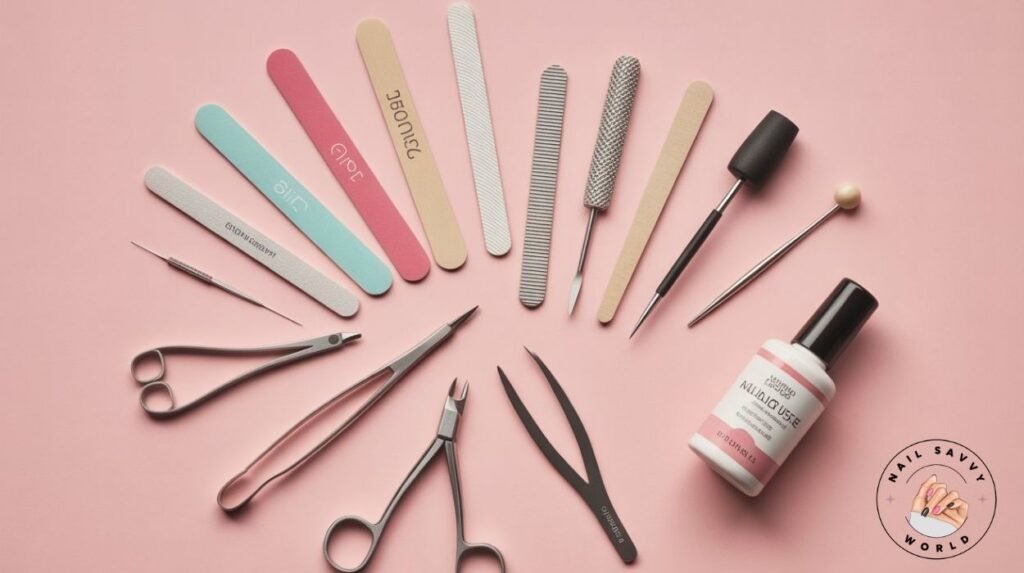
Before you even think about shaping, trim your nails:
Product rec: Seki Edge Stainless Steel Nail Clippers are a favorite among pros for their sharp precision.
Once trimmed, you’ll use filing to finesse your shape. Trust me, this saves time and keeps nails stronger.
Choosing a nail shape is part style, part lifestyle. Let’s break down the most popular ones and how to file them properly.
Square nails are timeless, sharp, chic, and low-maintenance. Here’s how to file nails square without breakage:
Square nails are perfect for office vibes or anyone who likes a clean, modern look. They’re also ideal for strong natural nails because the flat tip reinforces durability. If you’re looking for a tutorial, search “how to file nails square tutorials” or better yet, bookmark this guide.
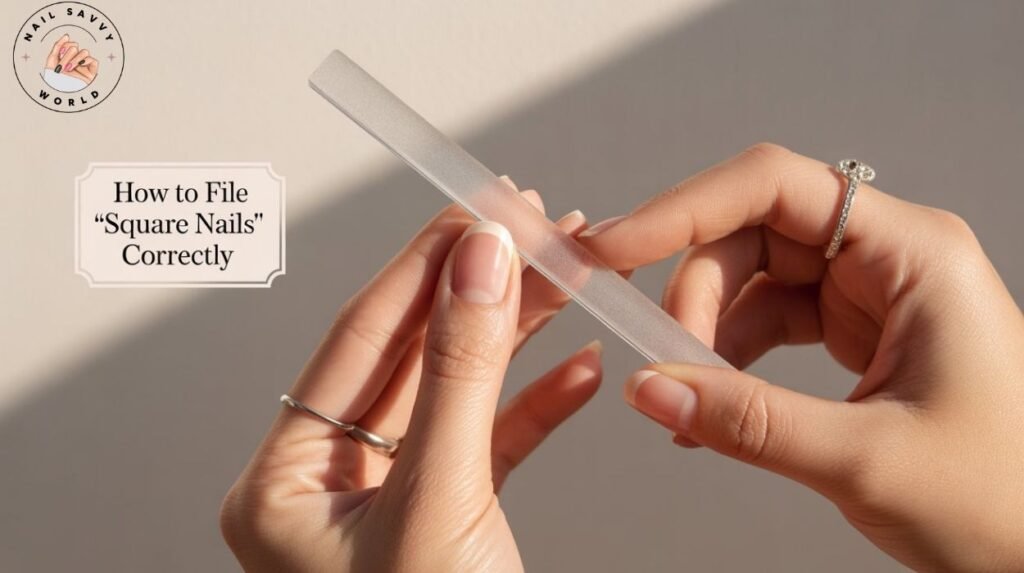
Almond nails are universally flattering; they make your fingers look longer and more feminine.
Steps to file almond nails shape natural:
This is where beginners often panic about symmetry, but here’s the hack: keep checking from above to ensure both sides match. Doing my own nails, I use a mirror trick, holding both hands up together to check evenness.
Want that soft almond glow? Makartt Nail File Set has 100/180 grits for natural shaping.
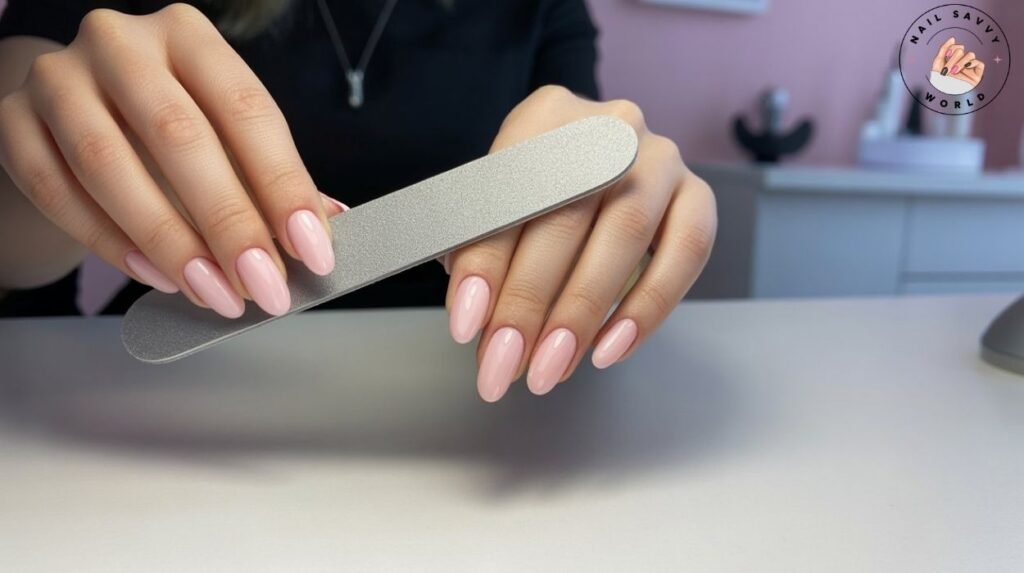
Coffin nails, aka ballerina nails, are bold, modern, and Instagram-famous. Here’s how to file nails into coffin shape at home:
This look slays on longer nails or acrylics, but can weaken natural nails if you’re rough. If you’re learning how to file nails correctly, coffin style, patience is your best friend.
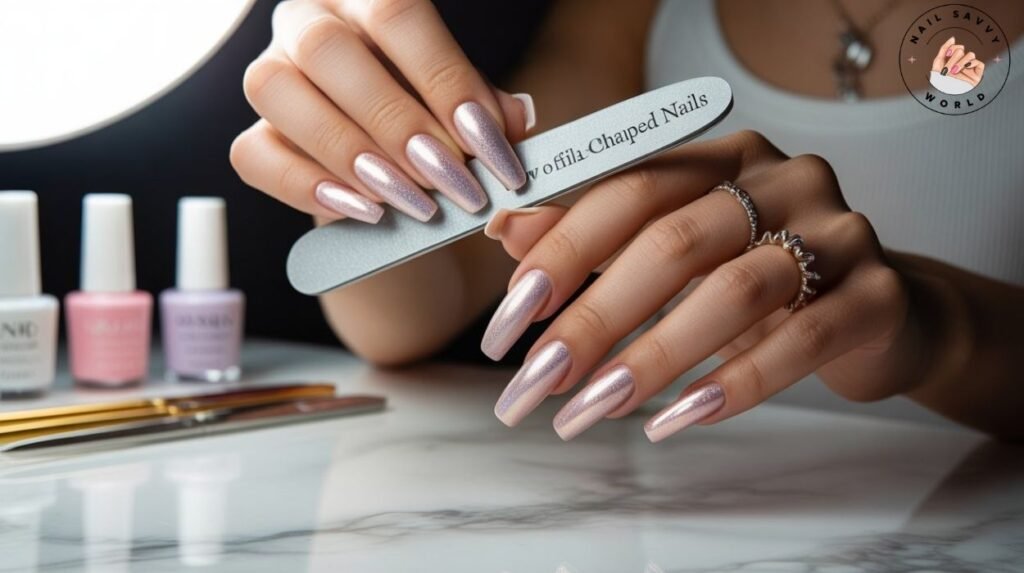
Oval nails = graceful and practical. Here’s the nail shaping tutorial:
Oval nails are lower-maintenance than almond or coffin, making them great if you’re always typing or cooking. They’re also beginner-friendly because they hide minor filing mistakes better.

Round nails are perfect if you like short nails but still want a polished shape. Here’s how to file short nails into a round finish:
Round nails are sturdy, less prone to breakage, and ideal for DIY beginners who say, “I’m doing my own nails but need them easy to manage.”
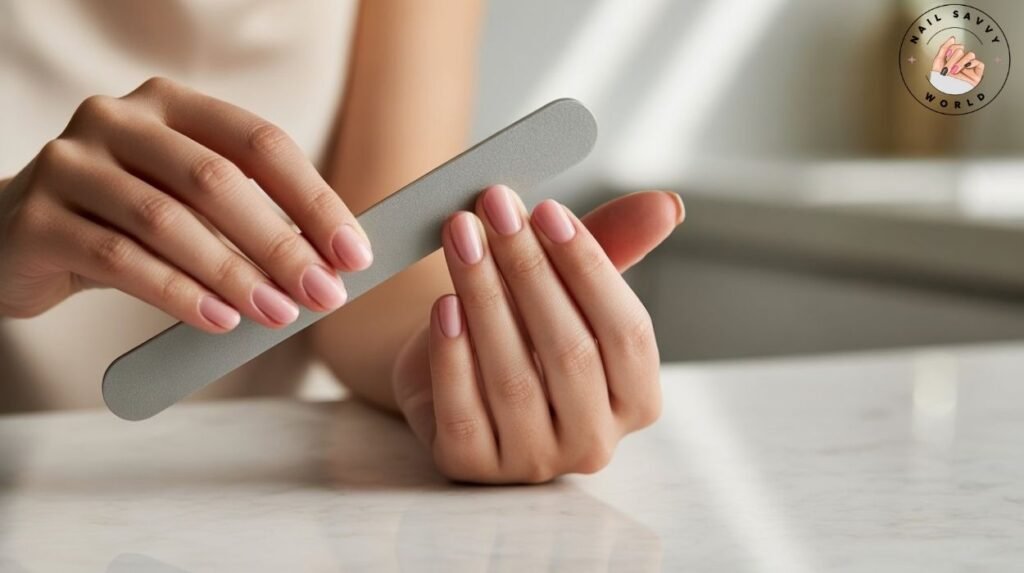
Doing my own nails at home taught me this: set up like a salon.
Check out my internal guide on Nail Care Tips to keep your freshly filed nails strong.
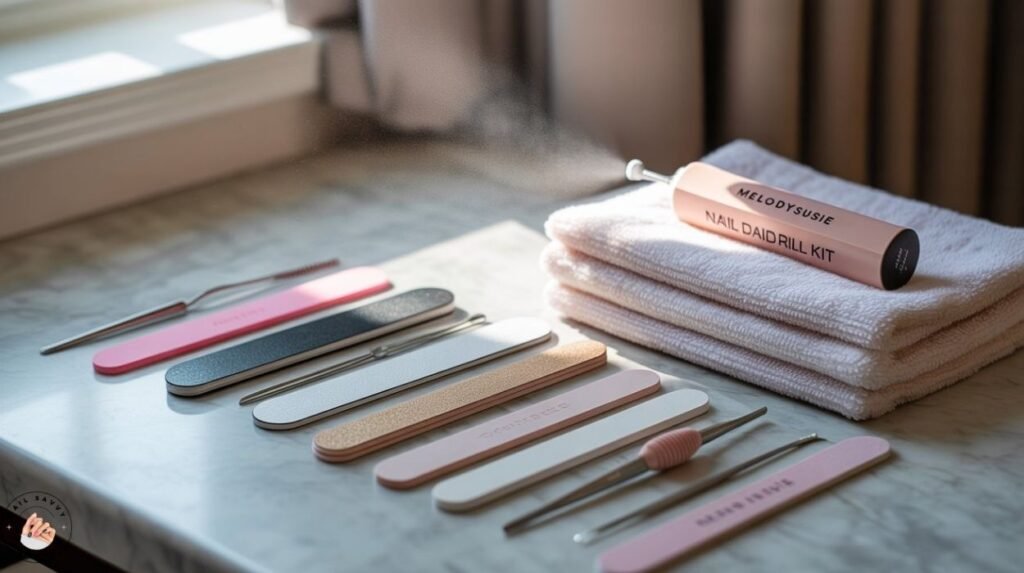
Breakage usually happens from:
To prevent this:
When in doubt, less is more. Filing nails correctly is about restraint, not force.
Want your nail shape to last longer between manis? Here’s the tea:
You should always file in one direction from the outer corner toward the centre, rather than a back-and-forth sawing motion. That back-and-forth movement weakens layers, causes fraying, and leads to splits.
For natural nails, a finer grit file (around 180–240 grit) is best, because it’s gentler and less likely to damage the nail plate. For acrylics or heavily layered nails, coarser grits (100–150) are used to remove bulk before finishing with a smoother grit.
If your nails are shorter or you prefer keeping them manageable, you can file 2× per week. For longer nails, once per week is usually enough. Frequent, gentle filing helps maintain shape and prevents chips.
In general, it’s best to avoid heavy filing or clipping while gel polish is on, because you risk breaking the “seal” at the edges, which can cause peeling or chipping. For small rough or snagged edges, you can gently buff or smooth just the affected area.
More forgiving, low-stress shapes tend to be round or oval because they lack sharp corners that catch. If you like something with more personality, a gently softened square (“squoval”) is also a good balance of strength and elegance.
Learning how to file nails is about more than looks; it’s nail health, self-care, and style expression rolled into one. From how to file square nails for that clean office vibe to how to file almond nails shape for elegance, every nail shape tells a story. The trick is knowing your tools, filing with intention, and avoiding the common mistakes beginners make.
So, next time you’re doing your own nails at home, remember: one direction, the right angle, and a little patience. Pair your shaping with smart nail care tips, and your nails will stay strong, stylish, and totally Instagram-worthy.
Grab your file, choose your shape, and make filing your new favorite form of self-care!